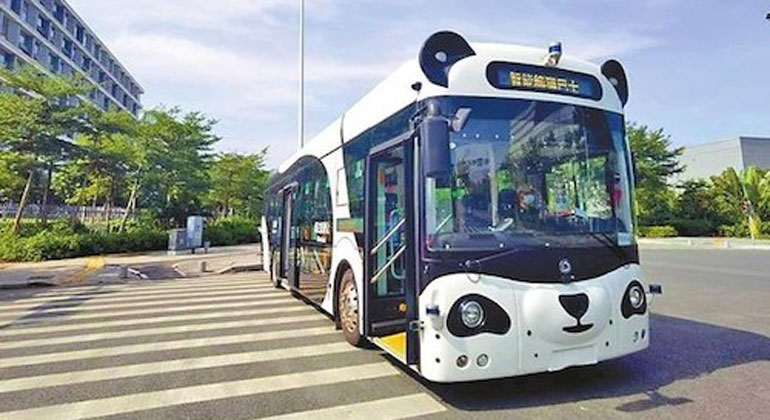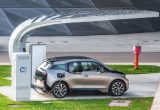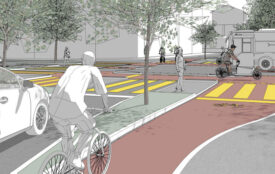Putting Electric Logistics Vehicles to Work in Shenzhen
In 2020, national and subnational governments have been forced to reassess livability for all of their residents. A significant and growing contributor to the disproportionate effects of air pollution and global greenhouse gas emissions are the vehicles that deliver goods and freight in our urban areas.
Globally, light- and medium-duty freight vehicles account for nearly half of overall road freight CO2 emissions and around 4% of global CO2 emissions. In 2015 the exhaust from diesel vehicles, which are often used for freight transport, resulted in an estimated 181,000 premature deaths around the world. The consequences of not addressing the health impacts of air pollution are growing even more severe, with new research showing that air pollution may increase susceptibility to COVID-19.
In this report series—Putting Electric Logistics Vehicles to Work in Shenzhen—we provide a reference point and a goal post for governments looking to reduce the health and climate impacts of freight transport in their communities. We do so by diving deeply into how Shenzhen, a metropolis in Southern China, has electrified logistics vehicles and where it can make changes to accelerate that transition.
A key focus of this research is on the utilization of electric logistics vehicles (ELVs), a concept that measures the degree to which these vehicles are used for their intended application. This is a major factor in determining whether or not ELVs can replace their dirtier, gasoline counterparts. We examine the policies, charging infrastructure deployment, technology, and market development advances critical to achieving the utilization necessary for ELVs to be the vehicle of choice for urban freight.
Our report series consists of the following reports, each of which contains specific insights based on the experience and lessons drawn from Shenzhen:
- Summary Volume: Charting a Path to Fully Electrifying Goods and Logistics Delivery
- Background Volume: Setting the Stage for Full Utilization of ELVs in Shenzhen
- Policy Volume: Utilization Subsidies as a Lever to Accelerate the ELV Market
- Infrastructure Volume: Enabling ELV Utilization through Well-Planned Charger Deployment
- Vehicle Quality Volume: Identifying Pain Points in ELV performance That Reduce Utilization
- Business Model Volume: Improving Utilization of ELVs through Innovations in Business and Ownership Models
While every city and nation has specific circumstances, the analysis, in particular in the Summary Volume, has significant relevance to global leaders. This includes state and city governments, logistics delivery and retail goods industries, and the financial sector.
The key insights from our work include:
- Full logistics electrification is possible. Shenzhen’s experience shows that a rapid transition to the use of EVs in urban logistics is feasible and, with the proper policy framework, vehicle operators will rapidly electrify.
- Policy must evolve as logistics electrification progresses. As the low-hanging fruit of logistics electrification is picked, policy makers must be prepared to pivot towards harder use cases. Doing so will change how cities approach vehicle incentivization and infrastructure deployment. Being able to dynamically adjust policy to the needs of distinct market segments as they electrify is critical to success.
- Growing an ELV fleet is a necessary but insufficient condition for logistics electrification. Policy makers often set EV targets in terms of share of sales or share of fleet. Getting EVs into the hands of operators is the first step in full logistics electrification but not the only step. Cities must also ensure that ELVs are able to displace the use of fossil fuel vehicles.
- Encourage innovation and entrepreneurialism in the supporting ecosystem. ELVs present the market with new challenges and opportunities and enabling the market to meet those challenges is key to the success of logistics electrification. Cities can support innovation in multiple ways, including engaging with industry to support innovative pilots that support proof-of-concept for new approaches to logistics electrification.
We hope that global leaders can take Shenzhen’s experience with logistics vehicle electrification and use it to accelerate electrification in their own communities.
After filling out the form below, click on a specific volume to download








